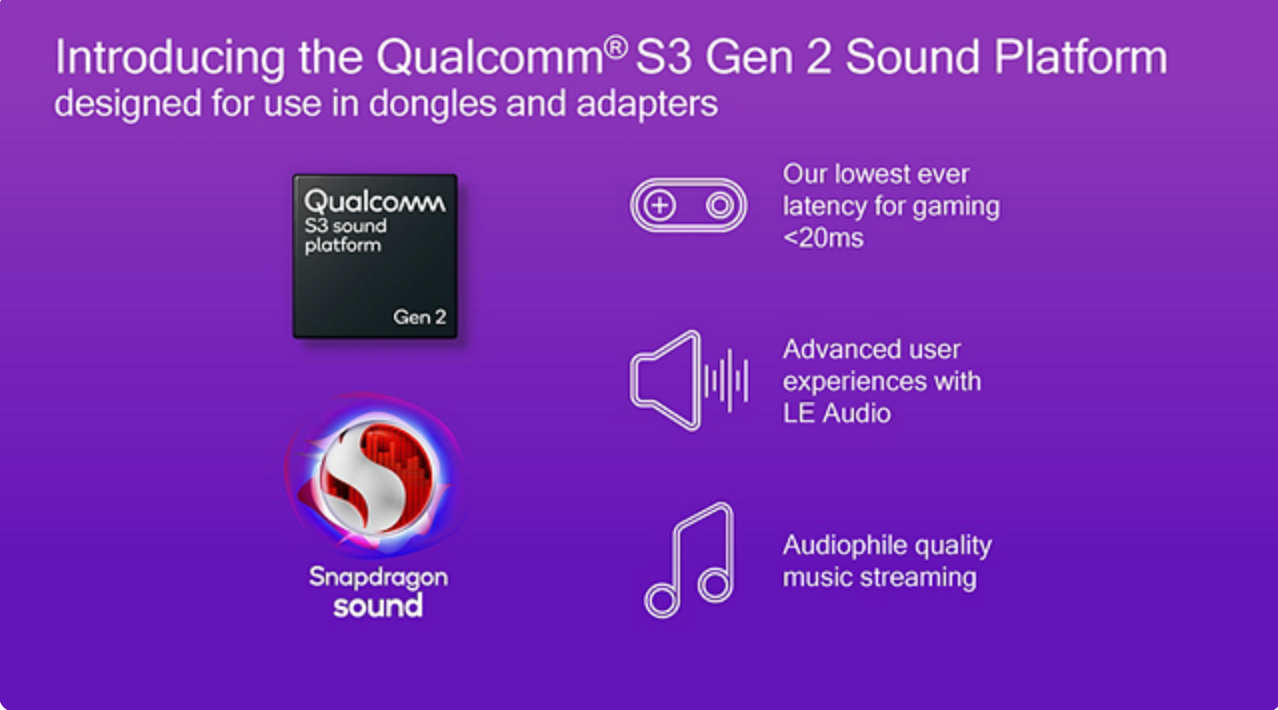Qualcomm has announced an upgrade to its S3 Gen 2 Sound platform, bolstering it with optimized latency that dips below 20 ms. The expansion is intended to offer “lag-free gaming audio,” which is achieved through the integration of Snapdragon Sound and LE Audio. The new additions to the platform aim to reduce latency for audio streams while reinforcing and advancing other planned features. With this new solution, the latency can be further diminished when the source device delivers game audio only, offering a more immersive gaming experience.
The S3 Gen 2 sound platform is part of Qualcomm’s suite of mobile audio ecosystems. It provides a technological framework for device manufacturers to build consumer products. The latest upgrade includes enhanced support for USB adapters, facilitating new Bluetooth dongles to deliver lower latency, high-quality audio streams, and LE Audio features. Qualcomm claims that USB adapters developed on the S3 Gen 2 platform can reduce lag to as low as 20 milliseconds, a significant improvement from 80ms for most other Bluetooth adapters and 48ms from LE Audio Bluetooth adapters. This development addresses one of the most significant concerns in-game audio, ensuring that the latency is low enough to keep pace with the game, a factor that has traditionally led most wireless gaming headsets to use faster 2.4GHz connections instead of Bluetooth.
In addition to the gaming enhancements, manufacturers can also leverage the platform to integrate Auracast broadcast audio functionality into dongles and adapters. This functionality would enable these devices to connect with source devices such as smartphones, laptops, and TVs. Auracast, a feature introduced in the latest Bluetooth audio standard LE Audio, allows multi-point Bluetooth broadcasts, enabling several users to stream audio from a single source. While still in its early stages of adoption, Auracast holds significant potential for commercial and educational settings, such as stadiums, airports, and gyms, where many people may use a screen simultaneously. The integration of USB transmitters could potentially expedite Auracast’s adoption by enabling any device with a USB port to add the feature.
Mike Canevaro, Director of Marketing and Head of Snapdragon Sound at Qualcomm, emphasized that the annual State of Sound survey shows that consumers desire lag-free audio for gaming and immersive wireless audio experiences. The new platform has been optimized to meet these needs, providing these experiences not just through proprietary gaming solutions, but also on smartphones.
Qualcomm’s announcement signals the expansion of its S3 Gen 2 platform, but it does not directly introduce new products for consumers. Device manufacturers will be able to utilize this new part of the S3 Gen 2 platform to build their own USB Bluetooth adapters for low-latency gaming or Auracast broadcasting. Headsets and earbuds that support Qualcomm S5 and S3 Gen 2 technology will deliver robust connectivity and dynamic latency adaptation, ensuring gamers can move away from their consoles or PCs and still experience the action in real-time, without any audio interruptions.
































































